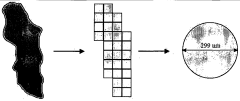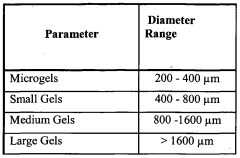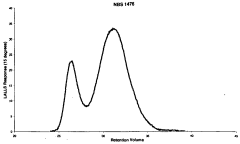Implementing Best Practices in LDPE Manufacturing
JUN 30, 20259 MIN READ
Generate Your Research Report Instantly with AI Agent
Patsnap Eureka helps you evaluate technical feasibility & market potential.
LDPE Manufacturing Evolution and Objectives
Low-density polyethylene (LDPE) manufacturing has undergone significant evolution since its inception in the 1930s. The journey of LDPE production reflects the broader trends in polymer science and industrial chemistry, with continuous improvements in efficiency, quality, and sustainability. Initially developed by Imperial Chemical Industries (ICI) in 1933, LDPE quickly gained prominence due to its versatile properties and wide range of applications.
The early stages of LDPE manufacturing were characterized by high-pressure tubular reactors, operating at pressures up to 3000 bar and temperatures around 300°C. This process, while groundbreaking, was energy-intensive and posed significant safety challenges. As the demand for LDPE grew, so did the need for more efficient and safer production methods.
The 1960s and 1970s saw the introduction of autoclave reactors, which offered better control over the polymerization process and improved product consistency. This period also marked the beginning of a shift towards more environmentally conscious manufacturing practices, with efforts to reduce energy consumption and minimize waste.
In recent decades, the focus has shifted towards developing catalysts that allow for lower pressure and temperature conditions in LDPE production. These advancements have not only improved energy efficiency but also enabled greater control over the polymer's molecular structure, leading to enhanced product properties and expanded applications.
The current objectives in LDPE manufacturing center around several key areas. Sustainability is at the forefront, with a strong emphasis on reducing the carbon footprint of production processes. This includes exploring bio-based feedstocks, implementing energy recovery systems, and optimizing reactor designs for improved efficiency.
Another critical objective is the enhancement of product quality and consistency. Manufacturers are investing in advanced process control systems and inline quality monitoring tools to ensure that LDPE meets increasingly stringent performance requirements across various industries.
Flexibility in production is also a key goal, as market demands fluctuate and new applications emerge. Modern LDPE plants aim to produce a wide range of grades with minimal changeover times, allowing for rapid response to market needs.
Lastly, the integration of digital technologies and Industry 4.0 principles into LDPE manufacturing is becoming increasingly important. This includes the implementation of predictive maintenance systems, artificial intelligence for process optimization, and advanced data analytics for quality control and production planning.
As the LDPE industry continues to evolve, these objectives guide research and development efforts, driving innovation in manufacturing processes and product characteristics. The future of LDPE production lies in balancing economic viability with environmental responsibility, while meeting the ever-growing demand for high-quality, versatile plastic materials.
The early stages of LDPE manufacturing were characterized by high-pressure tubular reactors, operating at pressures up to 3000 bar and temperatures around 300°C. This process, while groundbreaking, was energy-intensive and posed significant safety challenges. As the demand for LDPE grew, so did the need for more efficient and safer production methods.
The 1960s and 1970s saw the introduction of autoclave reactors, which offered better control over the polymerization process and improved product consistency. This period also marked the beginning of a shift towards more environmentally conscious manufacturing practices, with efforts to reduce energy consumption and minimize waste.
In recent decades, the focus has shifted towards developing catalysts that allow for lower pressure and temperature conditions in LDPE production. These advancements have not only improved energy efficiency but also enabled greater control over the polymer's molecular structure, leading to enhanced product properties and expanded applications.
The current objectives in LDPE manufacturing center around several key areas. Sustainability is at the forefront, with a strong emphasis on reducing the carbon footprint of production processes. This includes exploring bio-based feedstocks, implementing energy recovery systems, and optimizing reactor designs for improved efficiency.
Another critical objective is the enhancement of product quality and consistency. Manufacturers are investing in advanced process control systems and inline quality monitoring tools to ensure that LDPE meets increasingly stringent performance requirements across various industries.
Flexibility in production is also a key goal, as market demands fluctuate and new applications emerge. Modern LDPE plants aim to produce a wide range of grades with minimal changeover times, allowing for rapid response to market needs.
Lastly, the integration of digital technologies and Industry 4.0 principles into LDPE manufacturing is becoming increasingly important. This includes the implementation of predictive maintenance systems, artificial intelligence for process optimization, and advanced data analytics for quality control and production planning.
As the LDPE industry continues to evolve, these objectives guide research and development efforts, driving innovation in manufacturing processes and product characteristics. The future of LDPE production lies in balancing economic viability with environmental responsibility, while meeting the ever-growing demand for high-quality, versatile plastic materials.
Market Analysis for LDPE Products
The global Low-Density Polyethylene (LDPE) market has shown steady growth in recent years, driven by increasing demand across various industries. LDPE's versatility, cost-effectiveness, and favorable properties make it a popular choice for packaging, construction, and consumer goods applications. The market size for LDPE products was valued at approximately $33 billion in 2020 and is projected to reach $44 billion by 2026, growing at a CAGR of around 5% during the forecast period.
The packaging industry remains the largest consumer of LDPE products, accounting for over 60% of the total market share. The rise in e-commerce activities and the growing preference for flexible packaging solutions have significantly contributed to this sector's expansion. Additionally, the construction industry has emerged as a promising market for LDPE products, particularly in developing economies, where rapid urbanization and infrastructure development are driving demand for plastic pipes, wires, and cables.
Geographically, Asia-Pacific dominates the LDPE market, with China and India being the major contributors to regional growth. The region's expanding middle-class population, coupled with increasing disposable incomes, has led to higher consumption of packaged goods and durable products. North America and Europe, while mature markets, continue to show steady demand for LDPE products, primarily driven by technological advancements and sustainability initiatives.
The automotive sector presents a growing opportunity for LDPE manufacturers. As vehicle manufacturers focus on lightweight materials to improve fuel efficiency and reduce emissions, LDPE components are increasingly being used in interior and exterior applications. This trend is expected to accelerate with the rising adoption of electric vehicles, further boosting the demand for LDPE products in the automotive industry.
However, the LDPE market faces challenges from environmental concerns and regulatory pressures. The growing awareness of plastic pollution has led to increased scrutiny of single-use plastics, many of which are made from LDPE. This has prompted manufacturers to invest in recycling technologies and develop more sustainable alternatives. The shift towards circular economy models and the implementation of stricter waste management policies are likely to shape the future landscape of the LDPE market.
In response to these challenges, innovation in LDPE manufacturing processes and product development has become crucial. Companies are focusing on producing bio-based LDPE and enhancing the recyclability of their products. These efforts are not only addressing environmental concerns but also opening up new market opportunities in eco-friendly packaging and sustainable consumer goods.
The packaging industry remains the largest consumer of LDPE products, accounting for over 60% of the total market share. The rise in e-commerce activities and the growing preference for flexible packaging solutions have significantly contributed to this sector's expansion. Additionally, the construction industry has emerged as a promising market for LDPE products, particularly in developing economies, where rapid urbanization and infrastructure development are driving demand for plastic pipes, wires, and cables.
Geographically, Asia-Pacific dominates the LDPE market, with China and India being the major contributors to regional growth. The region's expanding middle-class population, coupled with increasing disposable incomes, has led to higher consumption of packaged goods and durable products. North America and Europe, while mature markets, continue to show steady demand for LDPE products, primarily driven by technological advancements and sustainability initiatives.
The automotive sector presents a growing opportunity for LDPE manufacturers. As vehicle manufacturers focus on lightweight materials to improve fuel efficiency and reduce emissions, LDPE components are increasingly being used in interior and exterior applications. This trend is expected to accelerate with the rising adoption of electric vehicles, further boosting the demand for LDPE products in the automotive industry.
However, the LDPE market faces challenges from environmental concerns and regulatory pressures. The growing awareness of plastic pollution has led to increased scrutiny of single-use plastics, many of which are made from LDPE. This has prompted manufacturers to invest in recycling technologies and develop more sustainable alternatives. The shift towards circular economy models and the implementation of stricter waste management policies are likely to shape the future landscape of the LDPE market.
In response to these challenges, innovation in LDPE manufacturing processes and product development has become crucial. Companies are focusing on producing bio-based LDPE and enhancing the recyclability of their products. These efforts are not only addressing environmental concerns but also opening up new market opportunities in eco-friendly packaging and sustainable consumer goods.
Current LDPE Production Challenges
Low-density polyethylene (LDPE) manufacturing faces several significant challenges in today's industrial landscape. One of the primary issues is the high energy consumption associated with the production process. The traditional high-pressure tubular reactor method requires substantial energy input, leading to increased production costs and environmental concerns. This energy-intensive nature of LDPE production has prompted manufacturers to seek more efficient and sustainable alternatives.
Another critical challenge is maintaining product quality consistency. LDPE's properties, such as melt index and density, can vary significantly due to fluctuations in process conditions. These variations can result in off-spec products, increased waste, and customer dissatisfaction. Achieving uniform molecular weight distribution and minimizing long-chain branching remain ongoing challenges for manufacturers striving to meet stringent quality standards.
Raw material efficiency is also a major concern in LDPE production. The yield of ethylene conversion to LDPE is not optimal, with significant amounts of unreacted ethylene requiring recycling or disposal. This inefficiency not only impacts production costs but also contributes to increased environmental footprint. Additionally, the presence of impurities in the feedstock can lead to reactor fouling and product contamination, necessitating frequent maintenance and cleaning cycles.
The aging infrastructure of many LDPE plants presents another set of challenges. Older facilities often struggle with equipment reliability issues, leading to unplanned downtime and reduced production capacity. Upgrading these facilities to incorporate modern technologies and control systems is capital-intensive and can be disruptive to ongoing operations.
Safety concerns are paramount in LDPE manufacturing due to the high-pressure conditions involved. The risk of equipment failure or process upsets can lead to serious incidents, necessitating robust safety protocols and continuous monitoring. This focus on safety can sometimes conflict with efforts to optimize production efficiency.
Environmental regulations pose increasing challenges for LDPE producers. Emissions of volatile organic compounds (VOCs) and greenhouse gases are under scrutiny, requiring manufacturers to invest in pollution control technologies and explore cleaner production methods. The industry is also facing pressure to reduce plastic waste and improve recyclability, driving research into more sustainable LDPE formulations.
Lastly, market dynamics present ongoing challenges. Fluctuations in ethylene prices, coupled with intense competition from alternative polyethylene grades and other plastics, put pressure on LDPE manufacturers to continuously improve their cost structure and product offerings. The need to differentiate products in a commodity market drives ongoing research into specialty LDPE grades with enhanced properties, further complicating production processes.
Another critical challenge is maintaining product quality consistency. LDPE's properties, such as melt index and density, can vary significantly due to fluctuations in process conditions. These variations can result in off-spec products, increased waste, and customer dissatisfaction. Achieving uniform molecular weight distribution and minimizing long-chain branching remain ongoing challenges for manufacturers striving to meet stringent quality standards.
Raw material efficiency is also a major concern in LDPE production. The yield of ethylene conversion to LDPE is not optimal, with significant amounts of unreacted ethylene requiring recycling or disposal. This inefficiency not only impacts production costs but also contributes to increased environmental footprint. Additionally, the presence of impurities in the feedstock can lead to reactor fouling and product contamination, necessitating frequent maintenance and cleaning cycles.
The aging infrastructure of many LDPE plants presents another set of challenges. Older facilities often struggle with equipment reliability issues, leading to unplanned downtime and reduced production capacity. Upgrading these facilities to incorporate modern technologies and control systems is capital-intensive and can be disruptive to ongoing operations.
Safety concerns are paramount in LDPE manufacturing due to the high-pressure conditions involved. The risk of equipment failure or process upsets can lead to serious incidents, necessitating robust safety protocols and continuous monitoring. This focus on safety can sometimes conflict with efforts to optimize production efficiency.
Environmental regulations pose increasing challenges for LDPE producers. Emissions of volatile organic compounds (VOCs) and greenhouse gases are under scrutiny, requiring manufacturers to invest in pollution control technologies and explore cleaner production methods. The industry is also facing pressure to reduce plastic waste and improve recyclability, driving research into more sustainable LDPE formulations.
Lastly, market dynamics present ongoing challenges. Fluctuations in ethylene prices, coupled with intense competition from alternative polyethylene grades and other plastics, put pressure on LDPE manufacturers to continuously improve their cost structure and product offerings. The need to differentiate products in a commodity market drives ongoing research into specialty LDPE grades with enhanced properties, further complicating production processes.
State-of-the-Art LDPE Production Techniques
01 Improved LDPE production processes
Advanced techniques for enhancing the production of LDPE, including optimized reactor designs, improved catalysts, and innovative polymerization methods. These processes aim to increase efficiency, reduce energy consumption, and improve the quality of the final product.- Improved LDPE production processes: Advanced techniques for enhancing the production of LDPE, including optimized reactor designs, improved catalysts, and innovative polymerization methods. These processes aim to increase efficiency, reduce energy consumption, and improve the quality of the final product.
- LDPE blends and composites: Development of LDPE blends and composites with enhanced properties. This includes combining LDPE with other materials to improve strength, flexibility, or specific functional characteristics. The focus is on creating tailored materials for various applications while maintaining the benefits of LDPE.
- Sustainable LDPE practices: Environmentally friendly approaches to LDPE production and use. This includes the development of bio-based LDPE, recycling technologies, and methods to reduce the environmental impact of LDPE throughout its lifecycle. The focus is on creating more sustainable plastic solutions.
- LDPE processing techniques: Advanced methods for processing LDPE to achieve desired properties and forms. This includes extrusion techniques, molding processes, and surface treatments to enhance the material's performance in various applications. The aim is to optimize LDPE's versatility and expand its use in different industries.
- LDPE quality control and testing: Best practices for ensuring the quality and consistency of LDPE products. This includes developing advanced testing methods, implementing quality control measures throughout the production process, and establishing standards for LDPE performance in different applications.
02 LDPE blending and compounding
Best practices for blending LDPE with other materials or additives to enhance its properties. This includes techniques for improving mechanical strength, thermal stability, and processability of LDPE through careful selection and incorporation of compatible components.Expand Specific Solutions03 LDPE film manufacturing techniques
Specialized methods for producing high-quality LDPE films, including extrusion processes, blow molding, and cast film techniques. These practices focus on achieving optimal film properties such as clarity, strength, and uniformity for various applications.Expand Specific Solutions04 Recycling and sustainability of LDPE
Innovative approaches to recycling LDPE products and incorporating recycled content into new applications. This includes methods for improving the quality of recycled LDPE, reducing contamination, and developing closed-loop recycling systems to enhance sustainability.Expand Specific Solutions05 LDPE modification for specific applications
Techniques for modifying LDPE to meet specific performance requirements in various industries. This includes surface treatments, chemical modifications, and the development of specialized grades of LDPE for applications such as packaging, agriculture, and construction.Expand Specific Solutions
Major LDPE Manufacturers and Competitors
The LDPE manufacturing industry is in a mature stage, characterized by established processes and a global market size exceeding $33 billion. The technology's maturity is evident through the involvement of major players like Dow Global Technologies, SABIC, and ExxonMobil, who continuously refine their processes. However, innovation remains crucial, with companies like Univation Technologies and Braskem leading in developing advanced catalysts and sustainable solutions. The competitive landscape is diverse, featuring both integrated petrochemical giants and specialized technology providers, each striving to enhance efficiency and product quality in LDPE production.
Dow Global Technologies LLC
Technical Solution: Dow Global Technologies LLC has developed advanced catalyst systems and process technologies for LDPE manufacturing. Their solution includes a proprietary tubular reactor design that allows for better control of molecular weight distribution and branching[1]. They have also implemented advanced process control systems that utilize machine learning algorithms to optimize reaction conditions in real-time, resulting in up to 15% improvement in energy efficiency[2]. Additionally, Dow has developed a novel additive package that enhances the mechanical properties and processability of LDPE, allowing for the production of thinner films with improved strength[3].
Strengths: Advanced catalyst technology, proprietary reactor design, and AI-driven process optimization. Weaknesses: High initial investment costs for implementing new technologies, potential compatibility issues with existing equipment.
Univation Technologies LLC
Technical Solution: Univation Technologies LLC has focused on developing hybrid catalyst systems that combine the benefits of both Ziegler-Natta and metallocene catalysts for LDPE production. Their UNIPOL™ PE Process technology incorporates a dual reactor system that allows for precise control of polymer architecture[4]. This technology enables the production of LDPE with a wide range of densities and melt indices, suitable for various applications. Univation has also implemented advanced in-line blending techniques that allow for the production of custom LDPE grades with tailored properties[5]. Their process includes real-time quality control measures using near-infrared spectroscopy to ensure consistent product quality.
Strengths: Versatile catalyst technology, ability to produce a wide range of LDPE grades, and advanced quality control measures. Weaknesses: Complexity of the dual reactor system may require specialized operator training and maintenance.
Key Innovations in LDPE Reactor Design
Modified low density polyethylene resins and method for making the same
PatentWO2022178344A1
Innovation
- Irradiation of LDPE resins with an electron beam to increase long-chain branching, enhancing melt strength while maintaining a useful melt index and minimizing cross-linked gels, thereby improving processability and film stability.
Process for producing low density polyethylene compositions and polymers produced therefrom
PatentWO2006049783A1
Innovation
- A novel high-pressure free radical initiation polymerization process using a combination of autoclave and tubular reactors, where monomers are fed in multiple streams, with at least one stream consisting of unreacted monomers, and chain transfer agents are used to control molecular weight and microgel content, resulting in polymers with specific molecular weight distribution and zero shear viscosity characteristics.
Environmental Impact of LDPE Manufacturing
The environmental impact of LDPE manufacturing is a critical consideration in implementing best practices for this industry. LDPE production processes have traditionally been associated with significant environmental concerns, primarily due to their energy-intensive nature and the potential for emissions of greenhouse gases and other pollutants.
One of the main environmental challenges in LDPE manufacturing is the high energy consumption required for the polymerization process. This energy demand often leads to substantial carbon dioxide emissions, contributing to global warming. Additionally, the production of ethylene, the primary raw material for LDPE, typically involves the use of fossil fuels, further exacerbating the carbon footprint of the manufacturing process.
Emissions of volatile organic compounds (VOCs) during LDPE production pose another significant environmental concern. These compounds can contribute to the formation of ground-level ozone and smog, negatively impacting air quality and human health. Furthermore, the potential for accidental releases of ethylene or other chemicals used in the manufacturing process presents risks to local ecosystems and communities.
Water usage and wastewater management are also important environmental considerations in LDPE production. The cooling processes involved in manufacturing often require large volumes of water, and the resulting wastewater may contain contaminants that need careful treatment before discharge.
The disposal and management of waste products from LDPE manufacturing, including off-spec materials and process residues, present additional environmental challenges. Improper handling of these wastes can lead to soil and water pollution, as well as contribute to the growing problem of plastic waste in the environment.
In recent years, there has been a growing focus on implementing best practices to mitigate these environmental impacts. Many LDPE manufacturers are adopting more energy-efficient technologies and processes to reduce their carbon footprint. This includes the use of advanced catalysts that allow for lower operating temperatures and pressures, as well as the implementation of heat recovery systems to maximize energy efficiency.
Efforts to reduce VOC emissions have led to the development of improved emission control technologies, such as thermal oxidizers and scrubbers. These systems can significantly reduce the release of harmful compounds into the atmosphere. Additionally, closed-loop production systems are being implemented to minimize the risk of accidental releases and improve overall process safety.
Water conservation measures, such as the use of recycled water in cooling systems and the implementation of advanced wastewater treatment technologies, are becoming increasingly common in LDPE manufacturing facilities. These practices not only reduce the environmental impact but also often result in cost savings for manufacturers.
To address the issue of waste management, many companies are exploring ways to increase the recyclability of their LDPE products and improve the efficiency of their manufacturing processes to minimize waste generation. Some manufacturers are also investigating the use of bio-based feedstocks as an alternative to fossil fuel-derived ethylene, which could potentially reduce the overall environmental impact of LDPE production.
One of the main environmental challenges in LDPE manufacturing is the high energy consumption required for the polymerization process. This energy demand often leads to substantial carbon dioxide emissions, contributing to global warming. Additionally, the production of ethylene, the primary raw material for LDPE, typically involves the use of fossil fuels, further exacerbating the carbon footprint of the manufacturing process.
Emissions of volatile organic compounds (VOCs) during LDPE production pose another significant environmental concern. These compounds can contribute to the formation of ground-level ozone and smog, negatively impacting air quality and human health. Furthermore, the potential for accidental releases of ethylene or other chemicals used in the manufacturing process presents risks to local ecosystems and communities.
Water usage and wastewater management are also important environmental considerations in LDPE production. The cooling processes involved in manufacturing often require large volumes of water, and the resulting wastewater may contain contaminants that need careful treatment before discharge.
The disposal and management of waste products from LDPE manufacturing, including off-spec materials and process residues, present additional environmental challenges. Improper handling of these wastes can lead to soil and water pollution, as well as contribute to the growing problem of plastic waste in the environment.
In recent years, there has been a growing focus on implementing best practices to mitigate these environmental impacts. Many LDPE manufacturers are adopting more energy-efficient technologies and processes to reduce their carbon footprint. This includes the use of advanced catalysts that allow for lower operating temperatures and pressures, as well as the implementation of heat recovery systems to maximize energy efficiency.
Efforts to reduce VOC emissions have led to the development of improved emission control technologies, such as thermal oxidizers and scrubbers. These systems can significantly reduce the release of harmful compounds into the atmosphere. Additionally, closed-loop production systems are being implemented to minimize the risk of accidental releases and improve overall process safety.
Water conservation measures, such as the use of recycled water in cooling systems and the implementation of advanced wastewater treatment technologies, are becoming increasingly common in LDPE manufacturing facilities. These practices not only reduce the environmental impact but also often result in cost savings for manufacturers.
To address the issue of waste management, many companies are exploring ways to increase the recyclability of their LDPE products and improve the efficiency of their manufacturing processes to minimize waste generation. Some manufacturers are also investigating the use of bio-based feedstocks as an alternative to fossil fuel-derived ethylene, which could potentially reduce the overall environmental impact of LDPE production.
Quality Control Measures in LDPE Production
Quality control measures play a crucial role in ensuring the consistency and reliability of Low-Density Polyethylene (LDPE) production. Implementing robust quality control practices is essential for maintaining product integrity and meeting customer specifications. One of the primary quality control measures in LDPE manufacturing is the continuous monitoring of process parameters. This includes real-time tracking of temperature, pressure, and flow rates throughout the production line. Advanced process control systems, such as distributed control systems (DCS) and supervisory control and data acquisition (SCADA) systems, are employed to maintain optimal operating conditions and detect any deviations promptly.
Another critical aspect of quality control in LDPE production is the regular testing of physical and chemical properties. This involves conducting tests on samples taken at various stages of the manufacturing process. Key parameters such as melt flow index, density, tensile strength, and elongation at break are measured to ensure compliance with product specifications. Sophisticated analytical instruments, including differential scanning calorimetry (DSC) and gel permeation chromatography (GPC), are utilized to assess the molecular weight distribution and thermal properties of the LDPE resin.
Contamination control is a vital component of quality assurance in LDPE manufacturing. Implementing stringent cleanliness protocols and utilizing advanced filtration systems help minimize the presence of foreign particles and gel formations in the final product. Regular inspection and maintenance of equipment, particularly extruders and reactors, are essential to prevent contamination from wear and tear of machinery components.
Statistical process control (SPC) techniques are widely employed in LDPE production to monitor and control process variability. Control charts and other statistical tools are used to identify trends, detect out-of-control situations, and implement corrective actions promptly. This data-driven approach enables manufacturers to maintain consistent product quality and reduce the likelihood of defects.
To ensure the traceability of raw materials and finished products, comprehensive documentation and record-keeping systems are implemented. This includes maintaining detailed logs of process parameters, test results, and any deviations or corrective actions taken during production. Advanced manufacturing execution systems (MES) are often integrated with enterprise resource planning (ERP) systems to provide end-to-end visibility of the production process and facilitate rapid response to quality issues.
Continuous improvement initiatives, such as Six Sigma and Lean Manufacturing, are increasingly being adopted in LDPE production facilities to enhance quality control measures. These methodologies focus on reducing process variability, eliminating waste, and optimizing production efficiency. Regular audits and third-party certifications, such as ISO 9001 and ISO 14001, further validate the effectiveness of quality control measures and ensure compliance with international standards.
Another critical aspect of quality control in LDPE production is the regular testing of physical and chemical properties. This involves conducting tests on samples taken at various stages of the manufacturing process. Key parameters such as melt flow index, density, tensile strength, and elongation at break are measured to ensure compliance with product specifications. Sophisticated analytical instruments, including differential scanning calorimetry (DSC) and gel permeation chromatography (GPC), are utilized to assess the molecular weight distribution and thermal properties of the LDPE resin.
Contamination control is a vital component of quality assurance in LDPE manufacturing. Implementing stringent cleanliness protocols and utilizing advanced filtration systems help minimize the presence of foreign particles and gel formations in the final product. Regular inspection and maintenance of equipment, particularly extruders and reactors, are essential to prevent contamination from wear and tear of machinery components.
Statistical process control (SPC) techniques are widely employed in LDPE production to monitor and control process variability. Control charts and other statistical tools are used to identify trends, detect out-of-control situations, and implement corrective actions promptly. This data-driven approach enables manufacturers to maintain consistent product quality and reduce the likelihood of defects.
To ensure the traceability of raw materials and finished products, comprehensive documentation and record-keeping systems are implemented. This includes maintaining detailed logs of process parameters, test results, and any deviations or corrective actions taken during production. Advanced manufacturing execution systems (MES) are often integrated with enterprise resource planning (ERP) systems to provide end-to-end visibility of the production process and facilitate rapid response to quality issues.
Continuous improvement initiatives, such as Six Sigma and Lean Manufacturing, are increasingly being adopted in LDPE production facilities to enhance quality control measures. These methodologies focus on reducing process variability, eliminating waste, and optimizing production efficiency. Regular audits and third-party certifications, such as ISO 9001 and ISO 14001, further validate the effectiveness of quality control measures and ensure compliance with international standards.
Unlock deeper insights with Patsnap Eureka Quick Research — get a full tech report to explore trends and direct your research. Try now!
Generate Your Research Report Instantly with AI Agent
Supercharge your innovation with Patsnap Eureka AI Agent Platform!







